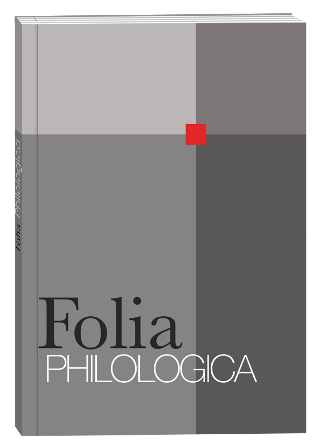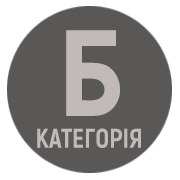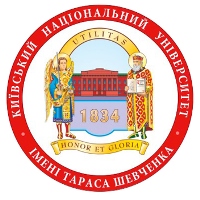THE NUCLEAR ZONE OF ASSOCIATIVE FIELDS FOR THE COLOUR TERM ЧОРНИЙ / ЧОРНЫ / CZARNY / ЧЕРЕН / BLACK: A COMPARATIVE ASPECT
DOI:
https://doi.org/10.17721/folia.philologica/2024/8/6Keywords:
psycholinguistics, associative experiment, stimulus, reaction, associative field, names of colours, blackAbstract
The article analyses associative field data of the stimulus lexeme ЧОРНИЙ / ЧОРНЫ / CZARNY / ЧЕРЕН / BLACK obtained from the speakers of Ukrainian, Belarusian, Polish, Bulgarian, and English within the framework of eleven free associative experiments. The choice of this adjective’s associative field is determined by both its significant linguistic status and the cultural significance of represented concept. The direct object of comparison has made the central zone of the respective associative fields, which included only those reactions that accounted for at least 5 percent of the total field. The aim of the study is to determine the degree of invariance (stability) of the core reactions, found for all fields, and the nature of the relations core reactions have to the stimulus word. It was found that the number of associates in the central zone of the researched fields varies from one (for the English-speaking British respondents) to five (for the Belarusian speakers). In general, the nine most frequent units are represented in the fields: 'white', 'colour', 'cat', 'night', 'dark', 'negro', 'raven', 'death', and 'day'. Reactions 'white' and 'colour' appear most frequently in the central zone (they were obtained within the framework of eight out of eleven experiments). In six experiments with the Slavic language speakers, the reaction 'cat' appeared in the central zone. Nuclear reactions 'night', 'dark', 'negro', 'raven', 'death', and 'day' are characterized by a lower degree of invariance (especially 'day', which is present as a core association only for the Belarusian language speakers). Virtually all of our identified central associates are related to the colour meaning of the stimulus word rather than its secondary meanings. The reactions obtained in the central zone enter into various types of relations with the stimulus word. The connection between the stimulus 'black' and the reaction 'white' seems the most straightforward, a typical manifestation of antonymic paradigmatic relationships. More complex, in our opinion, is the connection between the adjective 'black' and the reaction to it, manifest in the noun 'colour'. On the one hand, this relationship is a manifestation of syntagmatic grammatical relationships (especially in the languages inflected for gender). However, the associative experiments data suggest that speakers of the Slavic languages react to this stimulus as the name of a concept, ignoring its gender. Therefore, it is appropriate to see this fact as a manifestation of the relation between the name of the basic-level category and the superordinate-level category in the speakers’ mind. The connection between the stimulus 'black' and the reaction 'cat' is the most complex. This connection is undoubtedly based on syntagmatic relationships, but its high frequency is influenced by the factors that go beyond strictly linguistic factors. The appearance of the combination 'black cat' in the central zone of associative fields is influenced by the elements of traditional worldview, where mythologem of the 'CAT' (with the highly relevant subconcept 'BLACK CAT') is endowed with evaluative meanings. The negative assessment of black cats, in particular, has led to the formation of verbal nomination, which became firmly rooted in the linguistic memory of the community as a carrier of cultural and semiotic significance.
References
Butenko, N.P. (1979). Slovnyk asotsiatyvnykh norm ukrains’koyi movy [Dictionary of associations of Ukrainian language]. Lviv : Vyshcha shkola [in Ukrainian].
Gerganov, E. (Eds). (1984). Blgarski normy na slovesni asotsiatsiyi [Bulgarian association norms]. Sofia : Nauka I izkuztvo [in Bulgarian].
Heneral’nyi rehional’no anotovanyi korpus ukrains’koyi movy [General regionally annotated corpus of Ukrainian]. Retrieved from: https://uacorpus.org/Kyiv/ua/poshuk-u-grak/poshuk-cherez-interfejs-nosketchengine [in Ukrainian].
Martinek, S.V. (2002). Kontseptualizatsiya biloho ta chornoho kolioriv (za rezul’tatamy asotsiatyvnoho eksperymentu) [Conceptualization of white and black colours (according to the results of an associative experiment)]. Movni ta kontseptual’ni kartyny svitu, Ed. 7, 338–347 [in Ukrainian].
Martinek, S.V. (2008). Ukrains’kyi asotsiatyvnyi slovnyk [Ukrainian dictionary of associations]. Lviv, Vol. 1 [in Ukrainian].
Terekhova, D. (2000). Typolohiya verbal’nylh asotsiatsiy u vil’nomu asotsiatyvnomu eksperymenti [Typology of verbal associations in a free associative experiment]. Naukovi zapysky. Filolohichni nauky (movoznavstvo), ХXVI, 230–240 [in Ukrainian].
Berlin, B., & Kay, P. (1991). Basic Color Terms: Their Universality and Evolution. University of California Press.
Davies, M., & Gardner, D. (2010). Frequency Dictionary of Contemporary American English. Routledge.
Gawarkiewicz, R., Pietrzyk, I., Rodziewicz, B. (2008). Polski słownik asocjacyjny: z suplementem. Szczecin [in Polish].
Hardin, C. L. (2014). Berlin and Kay Theory. In R. Luo (Ed.). Encyclopedia of Color Science and Technology. New York: Springer, 1–4.
Kent, G. H., & Rosanoff, A. J. (1910). A Study of Association in Insanity. [Reprinted from American Journal of Insanity]. The Lord Baltimore Press, 67, 37-96, 317–390.
Kiss, G.R., Armstrong, C., Milroy, R., & Piper, J. The Edinburgh Associative Thesaurus. Database. Retrieved from: http://vlado.fmf.uni-lj.si/pub/networks/data/dic/eat/Eat.htm
Kurcz, I. (1967). Polskie normy powszechności skojarzeń swobodnych na 100 słów z listy Kent–Rosanoffa. Studia Psychologiczne. Wrocław–Warszawa–Kraków, Т.8, 122–255 [in Polish].
Narodowy Korpus Języka Polskiego. Retrieved from: http://nkjp.pl/ [in Polish].
Slavianskiy asotsiativniy slovar’: russkiy, bielorusskiy, bolgarskiy, ukrainskiy (2004). [Slavic dictionary of associations: Russian, Belorussian, Bulgarian, Ukrainian]. Moscow [in Russian].
Slovnyk ukrains’koyi movy v 11 tomakh [Dictionary of Ukrainian in 11 volumes]. Kyiv : Naukova dumka [in Ukrainian].
Wierzbicka, A. (2006). Semantyka. Jednostki elementarne i uniwersalne. Lublin : UMCS [in Polish].
Zhuikova, M., Svisdyns’ka, O. (2023). Rol’ eksperymentu G. Kent ta A. Rozanova u rozvytku psykholinhvistyky [The role of experiment by Kent and Rozanov in the development of psycholinguistics]. Metodolohia ta isoriohrafiya movoznavstva: zbirnyk tez X naukovo-praktychnoyi internet konferentsiyi. Slovyans’k – Dnipro, 90–97 [in Ukrainian].









